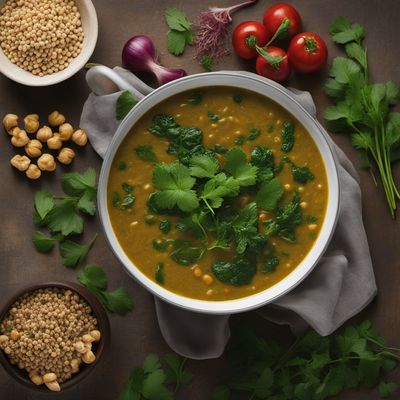
Ingredient
Persian shallots
"The Flavorful Gems of Persian Cuisine: Unveiling the Magic of Persian Shallots"
Persian shallots are small, elongated bulbs with a reddish-brown papery skin. They have a milder and sweeter flavor compared to regular onions, with subtle hints of garlic. The texture of Persian shallots is crisp and crunchy when raw, but becomes tender and caramelized when cooked. Their appearance adds an elegant touch to any dish, with their slender shape and vibrant color.
Origins and history
Persian shallots have a rich history dating back thousands of years in the region now known as Iran. They have been cultivated and used in Persian cuisine since ancient times, adding depth and complexity to traditional dishes. Persian shallots are deeply ingrained in the culinary culture of Iran and are considered an essential ingredient in many traditional recipes.
Nutritional information
Persian shallots are low in calories and fat, while being a good source of dietary fiber, vitamins, and minerals. They contain essential nutrients such as vitamin C, potassium, and manganese, which contribute to overall health and well-being.
Allergens
Persian shallots are not commonly associated with allergies, but individuals with onion or garlic allergies should exercise caution.
How to select
When selecting Persian shallots, look for bulbs that are firm, with no signs of softness or mold. The skin should be dry and papery, without any blemishes or sprouting. Choose shallots that are heavy for their size, as this indicates freshness.
Storage recommendations
To maintain the freshness and quality of Persian shallots, store them in a cool, dry, and well-ventilated place. Avoid storing them near potatoes or other vegetables that release moisture, as this can cause spoilage. Properly stored shallots can last for several weeks.
How to produce
Amateur gardeners can grow Persian shallots by planting individual bulbs in well-drained soil, ensuring they receive adequate sunlight and water. They can be grown from seeds or by dividing existing bulbs.
Preparation tips
To prepare Persian shallots, peel off the papery skin and trim the root end. They can be used raw in salads, salsas, or dressings to add a mild onion-garlic flavor. When cooked, Persian shallots develop a rich, sweet taste and can be sautéed, roasted, or caramelized to enhance the flavors of various dishes.
Substitutions
If Persian shallots are not available, you can substitute them with regular shallots or a combination of mild onions and garlic cloves to achieve a similar flavor profile.
Culinary uses
Persian shallots are a staple ingredient in Persian cuisine, used in a wide range of dishes such as stews, rice pilafs, kebabs, and pickles. They add depth and complexity to sauces, marinades, and dressings, and are often used as a garnish for their visual appeal.
Availability
Persian shallots are commonly available in Iran and other Middle Eastern countries. They can also be found in specialty grocery stores or markets catering to Persian cuisine.

